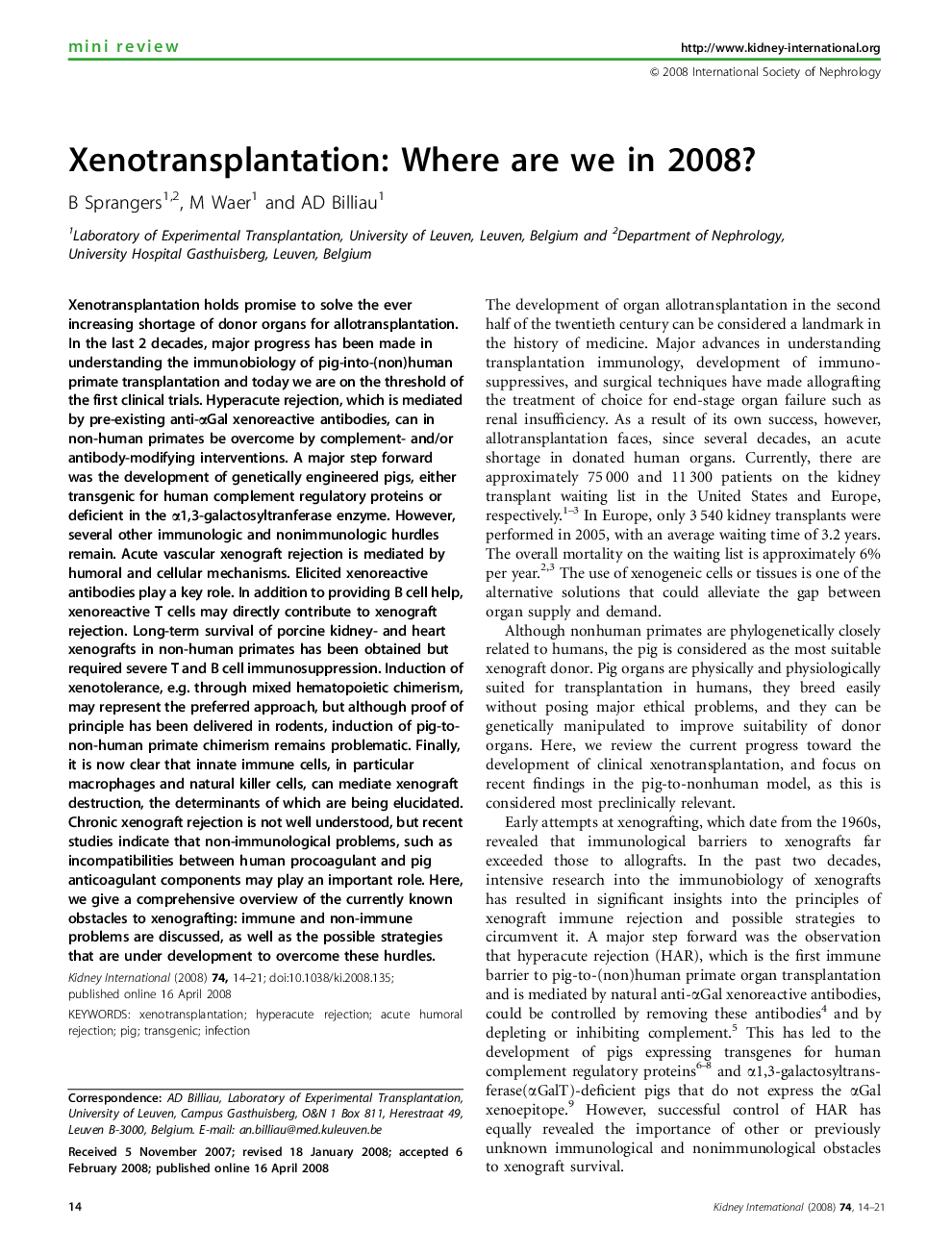| کد مقاله | کد نشریه | سال انتشار | مقاله انگلیسی | نسخه تمام متن |
|---|---|---|---|---|
| 3888514 | 1249620 | 2008 | 8 صفحه PDF | دانلود رایگان |

Xenotransplantation holds promise to solve the ever increasing shortage of donor organs for allotransplantation. In the last 2 decades, major progress has been made in understanding the immunobiology of pig-into-(non)human primate transplantation and today we are on the threshold of the first clinical trials. Hyperacute rejection, which is mediated by pre-existing anti-αGal xenoreactive antibodies, can in non-human primates be overcome by complement- and/or antibody-modifying interventions. A major step forward was the development of genetically engineered pigs, either transgenic for human complement regulatory proteins or deficient in the α1,3-galactosyltranferase enzyme. However, several other immunologic and nonimmunologic hurdles remain. Acute vascular xenograft rejection is mediated by humoral and cellular mechanisms. Elicited xenoreactive antibodies play a key role. In addition to providing B cell help, xenoreactive T cells may directly contribute to xenograft rejection. Long-term survival of porcine kidney- and heart xenografts in non-human primates has been obtained but required severe T and B cell immunosuppression. Induction of xenotolerance, e.g. through mixed hematopoietic chimerism, may represent the preferred approach, but although proof of principle has been delivered in rodents, induction of pig-to-non-human primate chimerism remains problematic. Finally, it is now clear that innate immune cells, in particular macrophages and natural killer cells, can mediate xenograft destruction, the determinants of which are being elucidated. Chronic xenograft rejection is not well understood, but recent studies indicate that non-immunological problems, such as incompatibilities between human procoagulant and pig anticoagulant components may play an important role. Here, we give a comprehensive overview of the currently known obstacles to xenografting: immune and non-immune problems are discussed, as well as the possible strategies that are under development to overcome these hurdles.
Journal: Kidney International - Volume 74, Issue 1, 1 July 2008, Pages 14–21